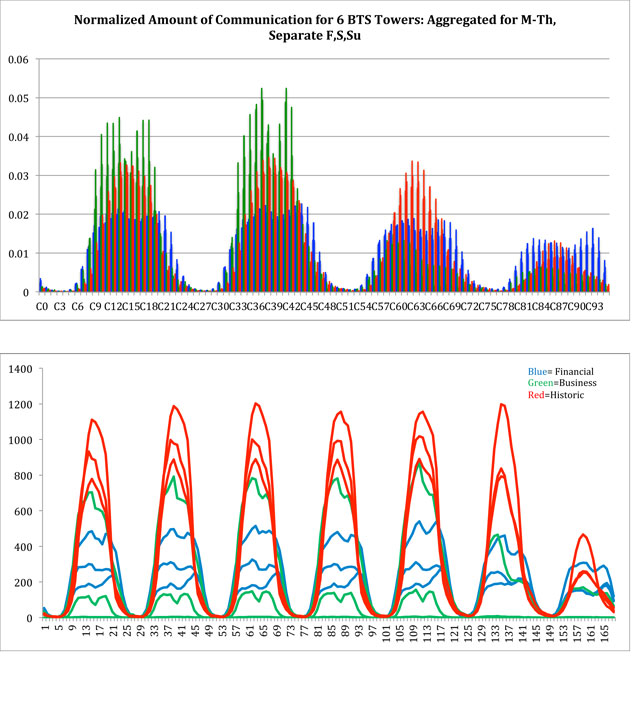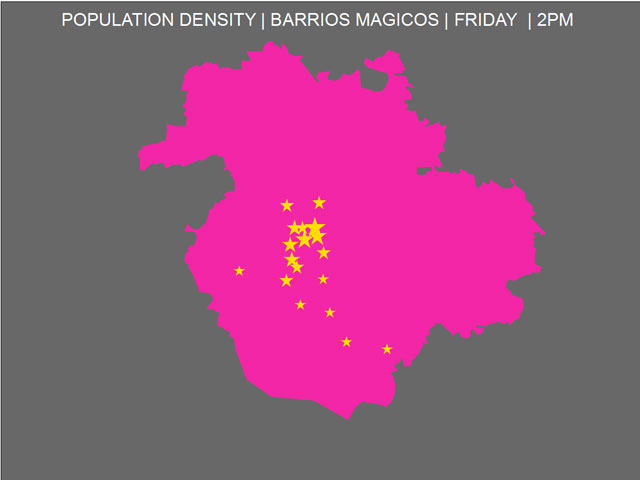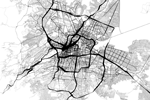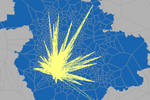

Isabelle Hazlewood is a Master of Science Urban Planning student at Columbia University's school of Architecture, Planning and Preservation. She received her Bachelor of Arts in History from the University of Michigan in 2010.
Danielle Dowler is a Master of Science Urban Planning student at Columbia University's school of Architecture, Planning and Preservation. She received her Bachelor of Arts in Urban studies from the University of California San Diego in 2011.
In 2011 the Mexico City government designated 21 neighborhoods "Barrios Magicos" or "Magical Neighborhoods." The purpose of this program is to spotlight areas of Mexico City that have particular historical or cultural significance in order to boost tourism in these neighborhoods. But are these neighborhoods really where permanent residents of Mexico City like to gather? A comparative analysis of population density by hour for one week from Telefonica cell phone data shows that the Barrios Magicos are not more populated than other parts of Mexico City at any given hour. Further research into the topic revealed that Mexico City residents in the Barrios Magicos are dissatisfied with the Barrios Magicos program. Our conclusion is that if the government of Mexico City decides to designate more Barrios Magicos, cell phone data can help them spotlight neighborhoods that are most popular with Mexico City's current population, and greater transparency about the Barrios Magicos program will increase receptiveness to the title of Barrio Magico.

We started this project with a curiosity about differences in cell phone data based on the primary function of the neighborhood. We compared the call volume data for three neighborhoods that were characterized as financial, business and historic districts. This comparison revealed a high call volume in historic areas. Further research on Mexico City revealed the Barrios Magicos program, which aims to highlight many of these historic districts. We then decided to focus our research of the Barrios Magicos exclusively. We were intrigued by the idea of static magic (ie: historical sites that are permanent and unchanging) vs. mobile magic (ie: what is important to people today based on cell phone data).


First we used maps of the magic neighborhoods provided by the Department of Tourism for Mexico City to draw shape files outlining the magic neighborhoods in GIS. We then isolated the BTS towers that lie within the magic neighborhoods, and aggregated the population density based on cell phone data for all of the BTS towers in that neighborhood so that each neighborhood would correspond with a single symbol. We compared the population density for every hour for one week within the magical neighborhoods and discovered that the neighborhoods are most magical on Friday afternoons, and that the neighborhoods of Zona Rosa and Roma Condesa are the most popular out of all the magical neighborhoods. However, this comparison gave little insight into how the magic neighborhoods rank in comparison to the rest of Mexico City.

We then decided to map the population density for all of the BTS towers in Mexico City with a different color for the Magic Neighborhoods. We used a natural breaks system for the hour that reached the peak population density to get the entire range of activity and imported the symbology from this hour for every other hour for the week. When comparing the population density for the magic neighborhoods to the rest of Mexico City we discovered that the magic neighborhoods are not the most popular neighborhoods and only four BTS towers in magic neighborhoods ever ranked in the top 10 most populated BTS towers. This realization prompted us to change our argument and instead show that "static magic" in Mexico City is not tied to the "mobile magic."

We then created a short video that describes the Barrios Magicos program, shows the magical neighborhoods, the population density comparison over one week and a clip from a Grupa Reforma video describing how the Barrios Magicos program has created more problems for residents in these neighborhoods.
The continuation of this project would be to determine which neighborhoods in Mexico City display the most mobile magic and what static attractions characterize these neighborhoods in order to better understand instances where mobile magic and static magic are more closely aligned.










